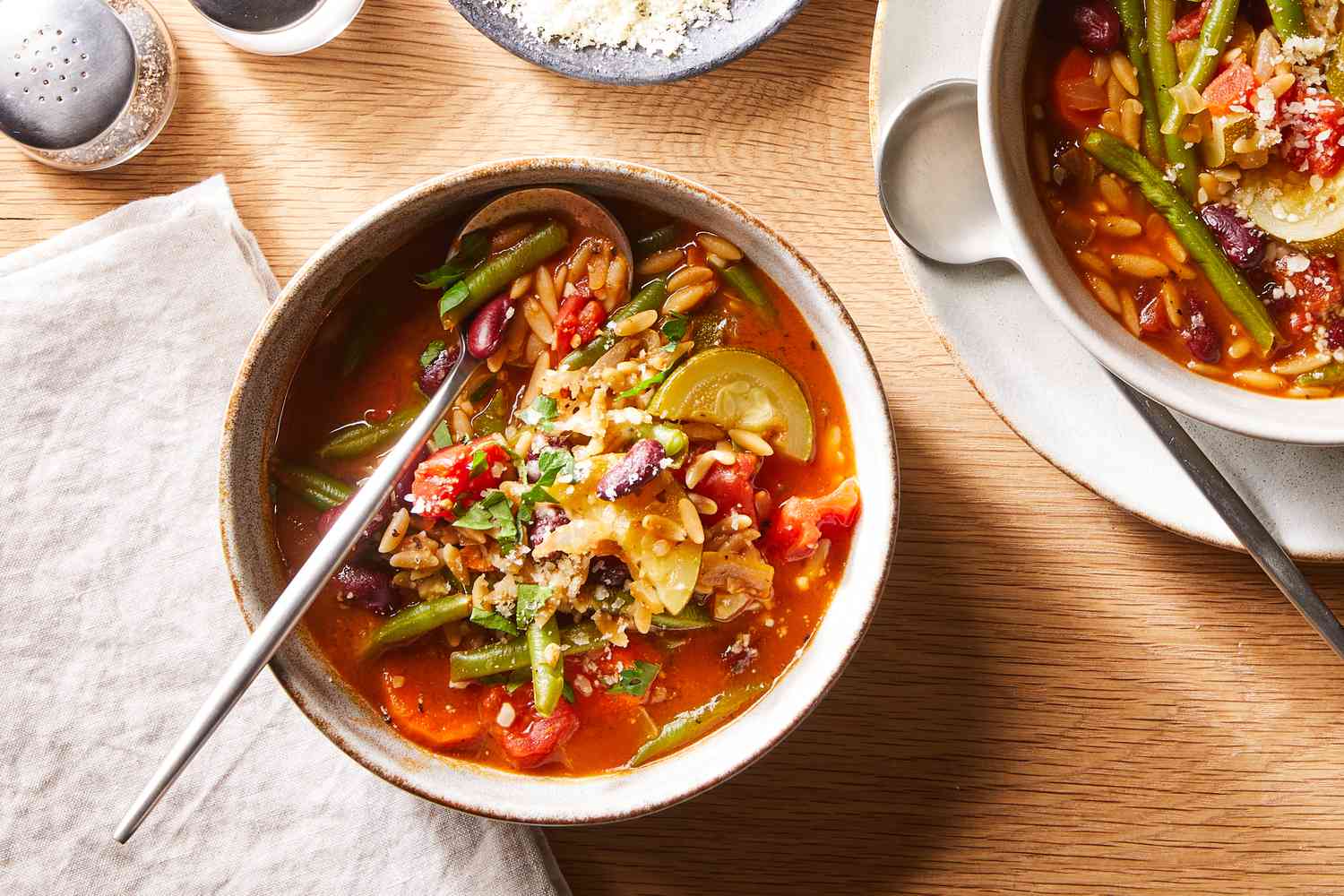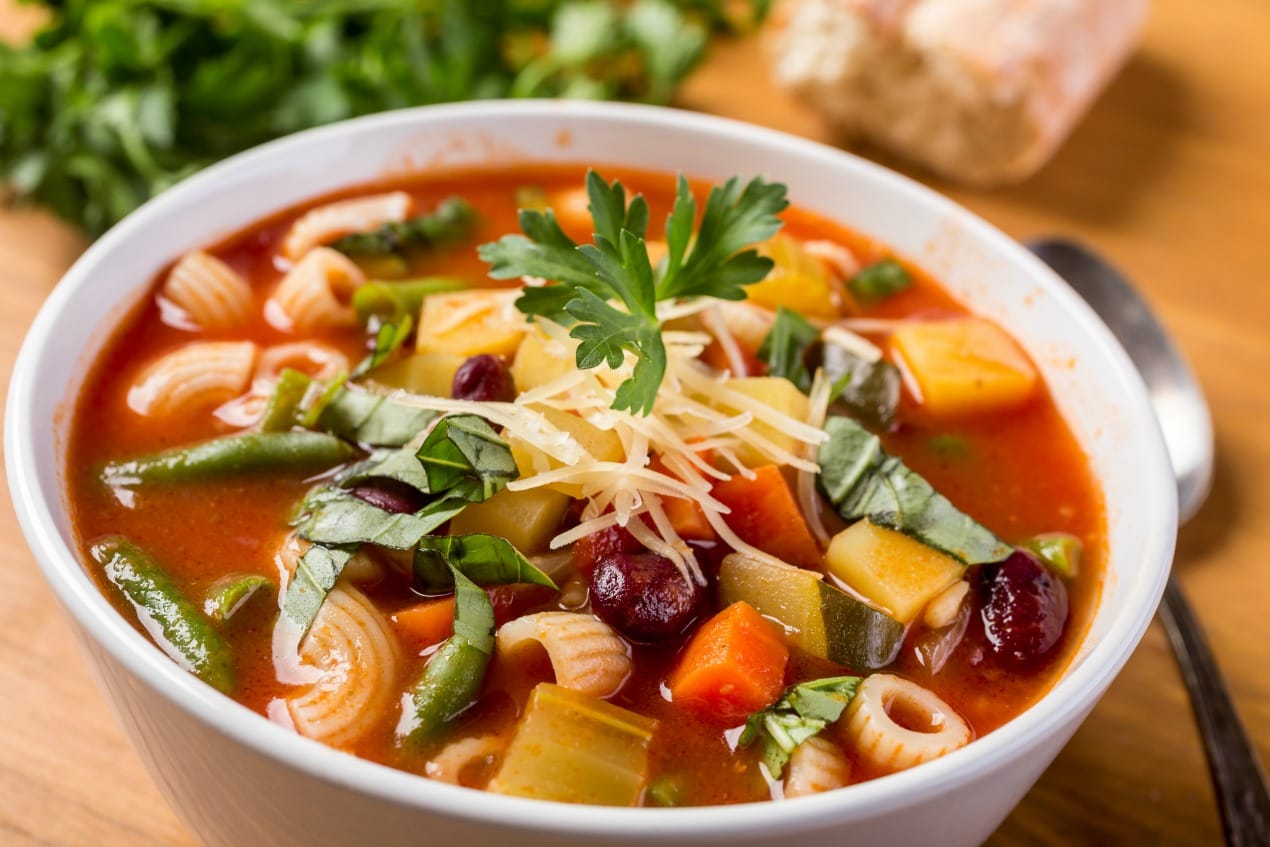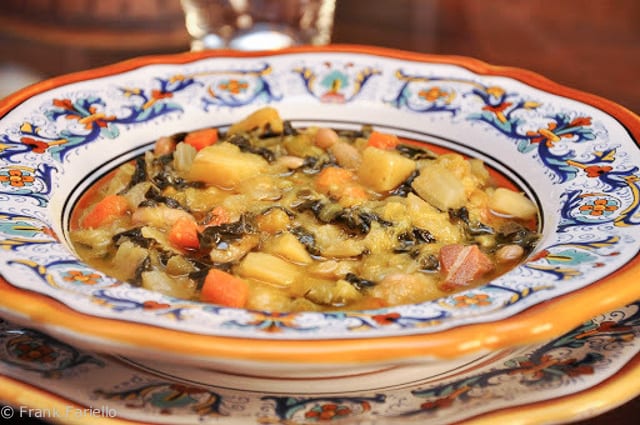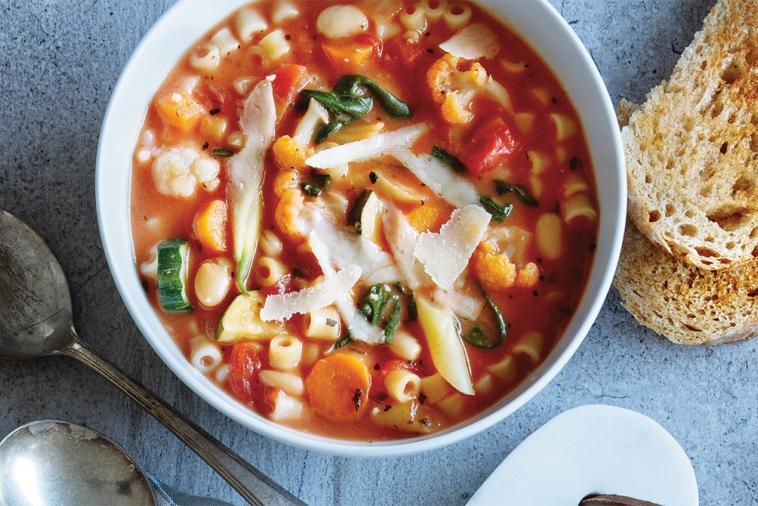Contents
- 1 The Origins of Minestrone: A Culinary Tradition
- 2 Essential Ingredients for a Delicious Minestrone
- 3 Tips for Making the Perfect Minestrone
- 4 Delicious Variations of Minestrone
- 5 Serving Suggestions: Perfect Pairings for Minestrone
- 6 Conclusion: Minestrone, The Ultimate Hearty and Wholesome Delight
- 7 Author
Minestrone is a beloved Italian soup that embodies the essence of hearty goodness and wholesome delight. Bursting with vibrant vegetables, beans, and pasta or rice, minestrone is a nourishing meal that has been enjoyed for centuries. This article explores the origins, ingredients, variations, and preparation of minestrone, offering insights and tips to help you savor this comforting dish in its many forms.
The Origins of Minestrone: A Culinary Tradition

Minestrone has its roots in Italy, where it has been a staple of Italian cuisine for centuries. The word “minestrone” is derived from the Italian word “minestra,” which means “soup.” Traditionally, minestrone was a peasant dish, made with whatever vegetables were available, often combined with beans and pasta or rice to create a filling meal. Its humble beginnings reflect a focus on using seasonal, locally-sourced ingredients, making it a highly adaptable and versatile dish.
Minestrone’s flexibility has allowed it to evolve over time, with each region in Italy developing its own unique version based on local ingredients and culinary traditions. Today, minestrone is enjoyed worldwide, appreciated for its robust flavors and nutritious qualities.
Essential Ingredients for a Delicious Minestrone

Creating a delicious minestrone involves using fresh, high-quality ingredients and balancing flavors to achieve a satisfying soup. Here are the essential components of a classic minestrone:
1. Vegetables
The heart of minestrone lies in its vegetables. Common choices include onions, carrots, celery, zucchini, tomatoes, and green beans. Leafy greens like spinach, kale, or Swiss chard can also be added for extra nutrition. The key is to use a variety of vegetables to create a rich, layered flavor profile.
2. Beans
Beans are a crucial ingredient in minestrone, providing protein and a creamy texture. Cannellini beans, kidney beans, and chickpeas are popular options. Using dried beans soaked overnight and cooked until tender can enhance the soup’s flavor, but canned beans are a convenient alternative.
3. Pasta or Rice
Pasta or rice adds substance to minestrone, making it a more filling meal. Small pasta shapes like ditalini, elbow macaroni, or orzo are commonly used. Arborio rice or brown rice can also be included for a different texture.
4. Broth
A flavorful broth forms the base of minestrone. Vegetable broth is ideal for a vegetarian version, while chicken or beef broth can be used for added depth. Using homemade broth can significantly enhance the soup’s overall taste.
5. Tomatoes
Tomatoes add acidity and richness to minestrone. Fresh tomatoes, canned tomatoes, or tomato paste can be used. The tomatoes should be cooked down to release their flavors and meld with the other ingredients.
6. Seasonings and Herbs
Seasonings and herbs are essential for bringing out the flavors in minestrone. Garlic, bay leaves, and a mix of Italian herbs like basil, oregano, and thyme are classic additions. Freshly ground black pepper and a touch of red pepper flakes can add a bit of heat.
7. Olive Oil
Olive oil is used for sautéing the vegetables and as a finishing touch before serving. It adds a rich, fruity flavor that enhances the overall taste of the soup.
Tips for Making the Perfect Minestrone

Creating the perfect minestrone requires attention to detail and a few expert tips. Here are some guidelines to help you make a delicious and satisfying minestrone:
1. Use Seasonal Vegetables
Using fresh, seasonal vegetables ensures the best flavor and texture. Visit your local farmers’ market or grocery store to find the freshest produce available.
2. Cook the Vegetables Properly
Start by sautéing the aromatics, such as onions, garlic, carrots, and celery, in olive oil until they are soft and fragrant. This step builds the flavor base for the soup. Add the remaining vegetables and cook them until they are tender but still retain their shape.
3. Layer the Flavors
Add the ingredients in stages to build depth of flavor. Begin with the aromatics, then add the tomatoes and broth. Finally, incorporate the beans and pasta or rice, allowing each ingredient to meld and enhance the soup.
4. Simmer Slowly
Allow the minestrone to simmer gently over low heat. This slow cooking method helps to develop the flavors and ensures that all the ingredients are cooked evenly.
5. Adjust the Consistency
Minestrone can be thick or brothy, depending on your preference. Add more broth if you prefer a soupier consistency, or let the soup reduce for a thicker texture. You can also blend a portion of the soup and stir it back in to thicken it naturally.
6. Season to Taste
Taste the soup as it cooks and adjust the seasonings as needed. Salt, pepper, and herbs should be added gradually and adjusted to your liking.
7. Finish with Fresh Herbs and Olive Oil
Just before serving, stir in fresh herbs like basil or parsley for a burst of flavor and color. Drizzle a bit of extra virgin olive oil over each bowl to enhance the richness and provide a finishing touch.
Delicious Variations of Minestrone

While classic minestrone is always a hit, there are countless variations to explore. Here are some creative takes on minestrone that add new flavors and textures to this beloved soup:
1. Pesto Minestrone
Stir a spoonful of pesto into the minestrone just before serving. The basil, garlic, and Parmesan in the pesto add a vibrant and aromatic flavor to the soup.
2. Winter Minestrone
Use winter vegetables like butternut squash, sweet potatoes, and kale for a hearty, cold-weather version of minestrone. Adding a dash of cinnamon or nutmeg can provide a warm, comforting twist.
3. Spring Minestrone
Incorporate spring vegetables such as asparagus, peas, and leeks for a lighter, fresher minestrone. A squeeze of lemon juice can brighten the flavors.
4. Minestrone with Sausage
Add cooked Italian sausage or chorizo to the minestrone for a robust and savory variation. The sausage adds protein and a spicy kick that complements the vegetables and beans.
5. Seafood Minestrone
Include seafood like shrimp, clams, or mussels in the minestrone for a coastal-inspired version. The seafood adds a delicate, briny flavor that pairs beautifully with the vegetables and broth.
6. Vegan Minestrone
Make a vegan version by using vegetable broth and omitting any animal products. Incorporate a variety of beans and vegetables for a nutritious and satisfying soup.
Serving Suggestions: Perfect Pairings for Minestrone
Minestrone is a versatile dish that can be enjoyed on its own or paired with a variety of sides. Here are some serving suggestions to complete your meal:
1. Crusty Bread
Serve minestrone with a slice of crusty bread or garlic bread. The bread is perfect for soaking up the flavorful broth and adds a satisfying crunch.
2. Salad
A fresh green salad with a light vinaigrette provides a refreshing contrast to the hearty soup. Include ingredients like mixed greens, cherry tomatoes, cucumbers, and red onions for extra flavor and texture.
3. Grated Cheese
Top each bowl of minestrone with freshly grated Parmesan or Pecorino Romano cheese. The cheese adds a salty, umami flavor that enhances the soup.
4. Wine Pairing
Pair minestrone with a glass of red wine, such as Chianti or Sangiovese, to complement the rich flavors of the soup. For a white wine option, a crisp Pinot Grigio works well.
5. Dessert
Finish your meal with a light dessert like fruit sorbet or biscotti. The sweet and refreshing dessert balances the savory flavors of the minestrone.
Conclusion: Minestrone, The Ultimate Hearty and Wholesome Delight
Minestrone stands as a testament to the hearty goodness and wholesome delight that Italian cuisine is known for. Whether you stick to the classic recipe or experiment with creative variations, minestrone offers a zeusslot login nourishing and satisfying experience with every spoonful. By using fresh, high-quality ingredients and following key techniques, you can master the art of making delicious minestrone and savor its comforting embrace. Enjoy this timeless soup as a staple in your culinary repertoire, bringing warmth and joy to your table.



